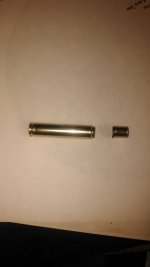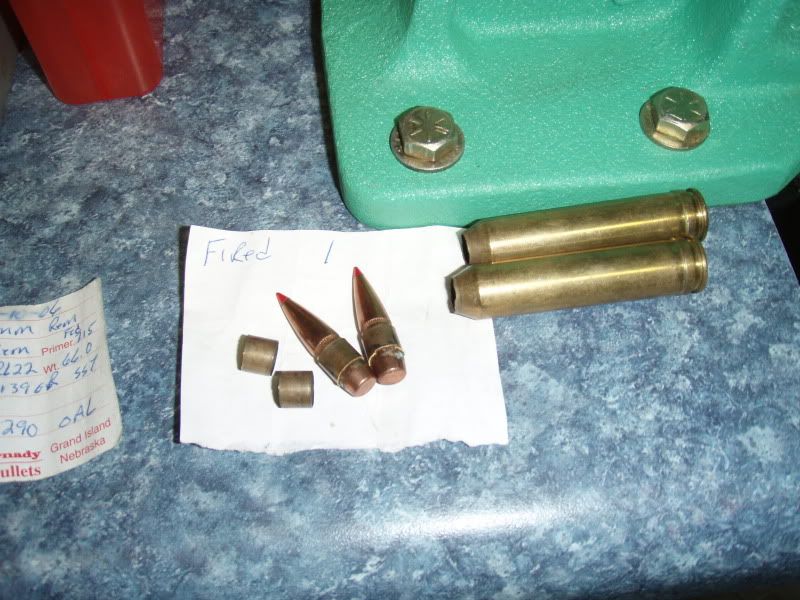truck driver
Ammo Smith
- Mar 11, 2013
- 7,303
- 845
I went to the range today to check out some loads that I have had setting on the bench for a while and wasn't impressed with the results so I'm not including pictures of the groups. I was testing some 225gr ABs and some 250gr PTs with RL17 and CFE223.
The 250s surprised me a little since they grouped better than the 225s but then I've always had better luck with flat base bullets over boat tails.
The 35 Whelen Ackely brass has been reloaded a lot and annealed after every firing since Scotty told me he annealed after each firing to preserve the life of the brass.
I have been losing one piece every now and then but tonight after cleaning what I shot today I decided to just resize the brass since I noticed some difference in case length and had planned to trim it.
The first piece into the sizing die left the case neck in the die. So I took the die apart and drove the neck out of the die with a punch and cleaned the die before I reassembled it. The next piece stuck in the die and the rim separated from the case leaving another problem to fix. I have a brass rod that I use to drive the case out of the die when I have this problem which until now was very rare. The piece of brass came out with out too much force, I cut the brass in two to get the sizer button out and I cleaned and reassembled the die again.
Now I got my jewelers magnifier out and stared to inspect each piece thoroughly before it was sized and used a dental pick to check for cracks on the inside of the brass that I couldn't see from the out side. I found a total of 10 pieces counting the first two.
Most of them just had star shaped cracks in the neck but there was quite a few that had cracks that would cause the neck to separate from the case, you could see a ring forming at the base of the neck and case shoulder with the magnifier that you couldn't see with the naked eye.
Here's a pic of the one the neck separated from.
I guess I got lucky with this one since it didn't separate in the rifle chamber.
Is this a common problem with fire formed cases?
The 250s surprised me a little since they grouped better than the 225s but then I've always had better luck with flat base bullets over boat tails.
The 35 Whelen Ackely brass has been reloaded a lot and annealed after every firing since Scotty told me he annealed after each firing to preserve the life of the brass.
I have been losing one piece every now and then but tonight after cleaning what I shot today I decided to just resize the brass since I noticed some difference in case length and had planned to trim it.
The first piece into the sizing die left the case neck in the die. So I took the die apart and drove the neck out of the die with a punch and cleaned the die before I reassembled it. The next piece stuck in the die and the rim separated from the case leaving another problem to fix. I have a brass rod that I use to drive the case out of the die when I have this problem which until now was very rare. The piece of brass came out with out too much force, I cut the brass in two to get the sizer button out and I cleaned and reassembled the die again.
Now I got my jewelers magnifier out and stared to inspect each piece thoroughly before it was sized and used a dental pick to check for cracks on the inside of the brass that I couldn't see from the out side. I found a total of 10 pieces counting the first two.
Most of them just had star shaped cracks in the neck but there was quite a few that had cracks that would cause the neck to separate from the case, you could see a ring forming at the base of the neck and case shoulder with the magnifier that you couldn't see with the naked eye.
Here's a pic of the one the neck separated from.
I guess I got lucky with this one since it didn't separate in the rifle chamber.
Is this a common problem with fire formed cases?







